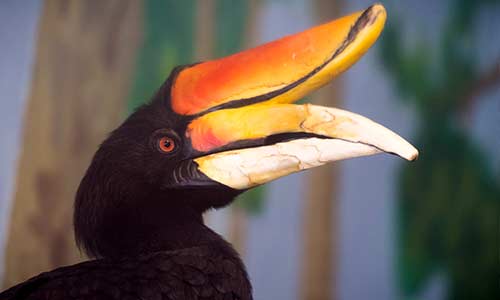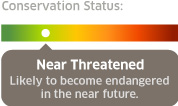Rhinoceros Hornbill
Buceros rhinoceros
You Can Find This Animal in the Windows to the Wild
Fun Fact
Adult pairs are monogamous, and the male courts the female for about one month prior to breeding. During this time he will present her with offerings of food. They plaster over a tree cavity to build their nest, leaving only a small hole so the male can feed the female while she sits on the eggs.
AZA SAFE: Saving Animals from Extinction
We're proud to support the Association of Zoos and Aquariums' SAFE initiative: A commitment to harness our collective resources, focus on specific endangered species (including hornbills), and save them from extinction by restoring healthy populations in the wild. 



